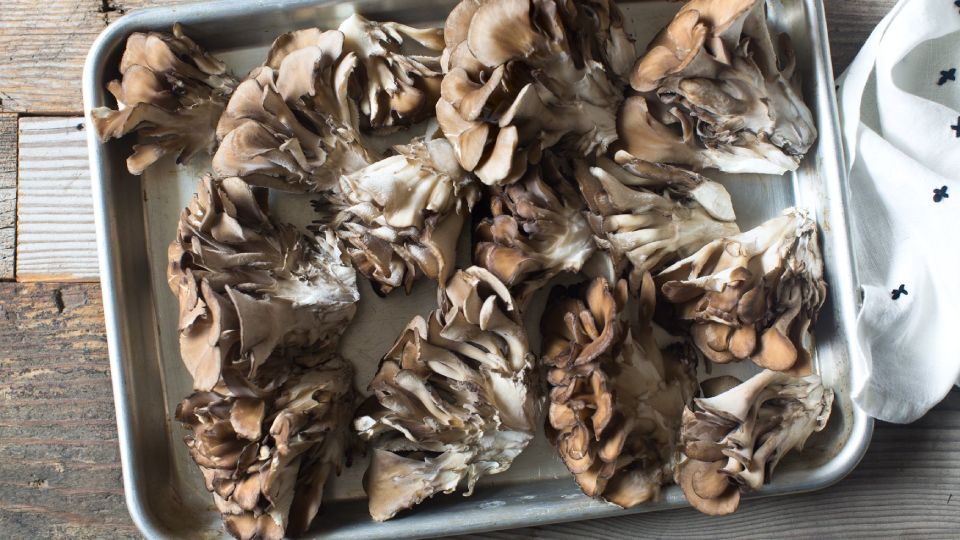Maitake Mushroom Recipes (6 Best Ways)
Explore our top 6 Maitake mushroom recipes. These unique fungi boast an earthy flavor and a meaty texture that’ll excite your taste buds. Whether sautéed or roasted, Maitake mushrooms in a sizzling pan transform into a delicious delight, from their flavorful stem to rich umami. Get ready for some enjoyable cooking with recipes that’ll leave you craving for seconds. Let’s dive in and start cooking!
In this article:
Maitake Mushroom Recipes
1. Sesame Garlic Maitake Mushrooms
Hold onto your aprons, folks, because we’ve got a vegan delight that’ll make your taste buds jump for joy! Get ready to tantalize your senses with our sesame garlic Maitake mushroom recipe. It’s so delicious, that you’ll be shouting “I can’t believe it’s vegan!”
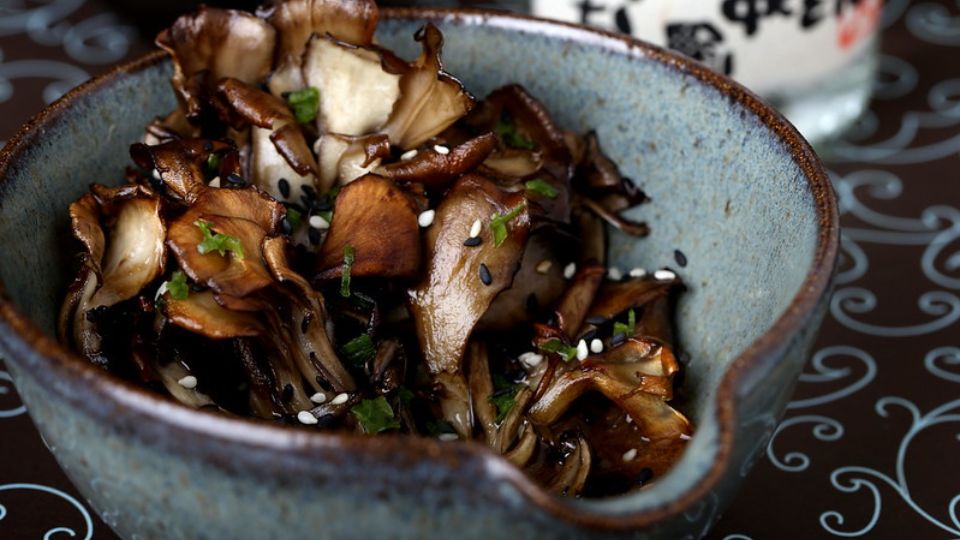
Ingredients
Instructions
- Gently pull apart the Maitake mushrooms into 3-inch slices.
- Heat a pan over medium-high heat and add the sesame oil.
- Place the mushroom slices in the pan and cook for 2 minutes on one side. Flip the mushrooms and cook for an additional 1 minute on the other side, until they begin to turn golden and slightly crispy.
- Add the minced garlic, tamari, and a hint of Sriracha to the pan. Stir and cook for 1 minute to allow the flavors to meld together.
- Remove from heat and serve as a flavorful side dish or incorporate them into soba noodles, stir fry, pizza, or ramen.
2. Pickled Maitake Mushrooms
Are you tired of the same old boring salads that make you want to leave the table? Well, hold on to your taste buds, because we’ve got a maitake mushroom salad recipe that will turn your salad game upside down and inside out.
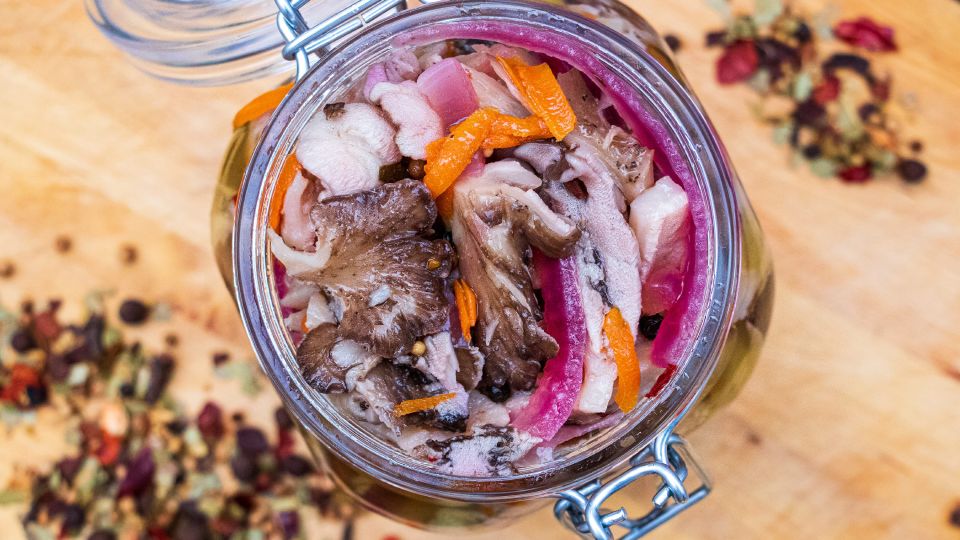
Ingredients
Instructions
- In a saucepan, combine white wine vinegar, water, sugar, kosher salt, black peppercorns, and bay leaves.
- Bring the mixture to a boil, stirring until the sugar and salt dissolve.
- Add the sliced mushroom chunks to the saucepan and reduce the heat to low, let it sizzle.
- Simmer for 10-15 minutes, then remove from heat and let it cool to room temperature.
- Transfer the mushrooms and pickling liquid to a sterilized jar and refrigerate for at least 24 hours.
- Enjoyed them in salads or as a delightful accompaniment to various dishes.
3. Maitake Stir-Fry with Chili (Vegetarian)
We present to you a maitake mushroom stir-fry recipe that is not only simple but also a delicious delight that will leave you begging for seconds (and maybe even thirds if you’re feeling adventurous).
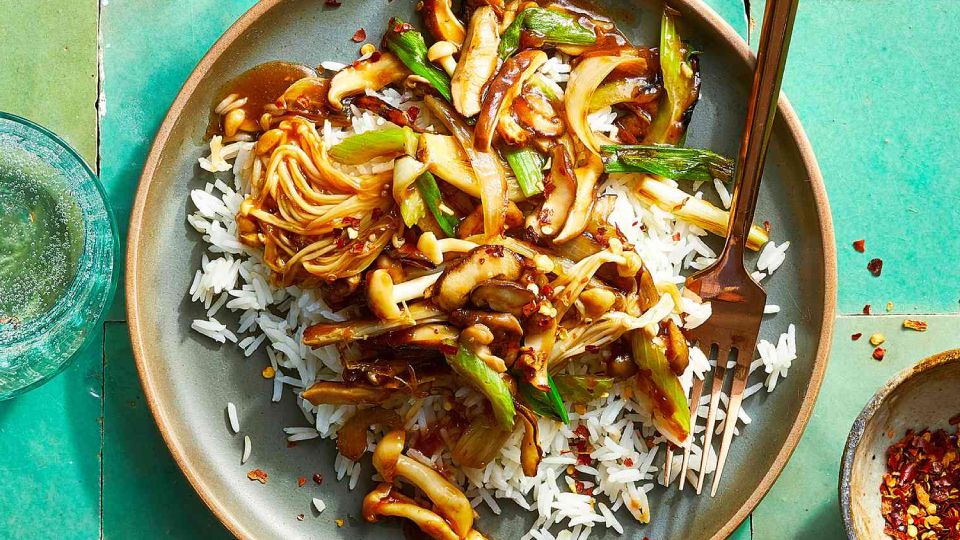
Ingredients
Instructions
- Heat vegetable oil in a pan over medium-high heat.
- Add celery and fry for 2 mins.
- Then add the mushrooms and stir-fry for 3-4 minutes until they begin to soften and turn light brown.
- Add minced garlic, and chili flakes and continue cooking for another 30 seconds, stirring occasionally.
- Drizzle tamari sauce and lemon juice over the mushrooms, and season with salt and pepper.
- Stir-fry for an additional 2 minutes until the mushrooms are tender and flavorful.
- Topping with fresh scallions, and a pinch of salt.
- Serve with rice.
4. Pasta with Maitake and White Wine (Italian Style)
Prepare yourself for a taste bud tango with our Italian-style Maitake Mushroom Pasta recipe. Trust us, it’s so delicious that you’ll be speaking fluent Italian in no time, or at least your taste buds will! The magical combination of savory maitake mushrooms and mouthwatering Italian flavors will have you doing the pasta dance of joy.
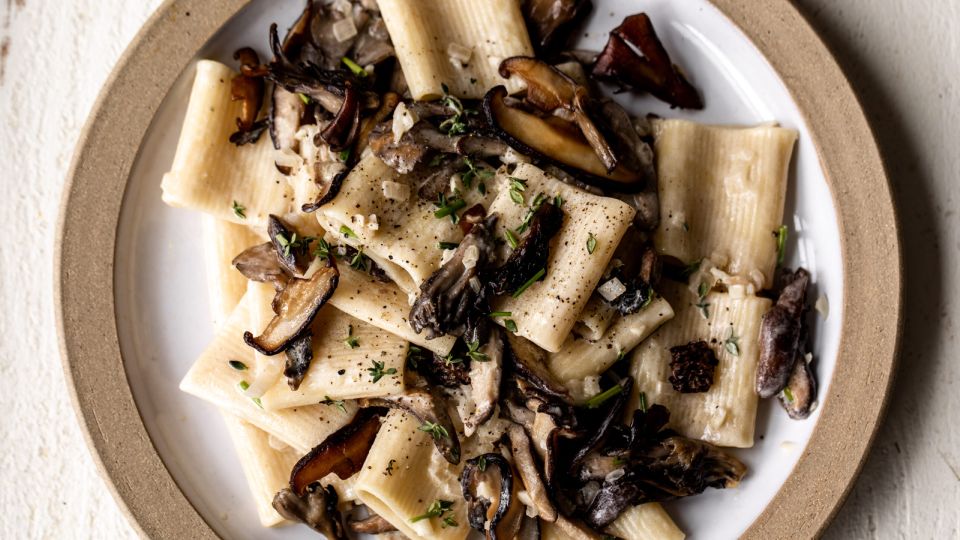
Ingredients
Instructions
- Cook the pasta according to the package instructions until al dente. Drain and set aside.
- Heat olive oil in a cast iron skillet over medium heat.
- Add the Maitake and cook maitake mushrooms for 3-4 minutes until they start to brown.
- Add minced garlic and cook for another 30 seconds, stirring occasionally.
- Pour the wine and vegetable broth into the skillet, and simmer for 2 minutes until the liquid reduces slightly.
- Stir in butter until melted and well combined. Season with salt and pepper.
- Add the cooked pasta and toss until the noodles are evenly coated.
- Serve hot, garnished with grated Parmesan cheese for a positively delightful
5. Seared Maitake Mushrooms
Get ready to take your taste buds on a wild and flavorful adventure with our Seared Maitake Mushrooms with Leeks recipe. It’s like a gourmet rollercoaster that will leave you begging for another ride. Trust us, this recipe is so good, that you’ll want to shout it from the mountaintops (or at least from your kitchen).
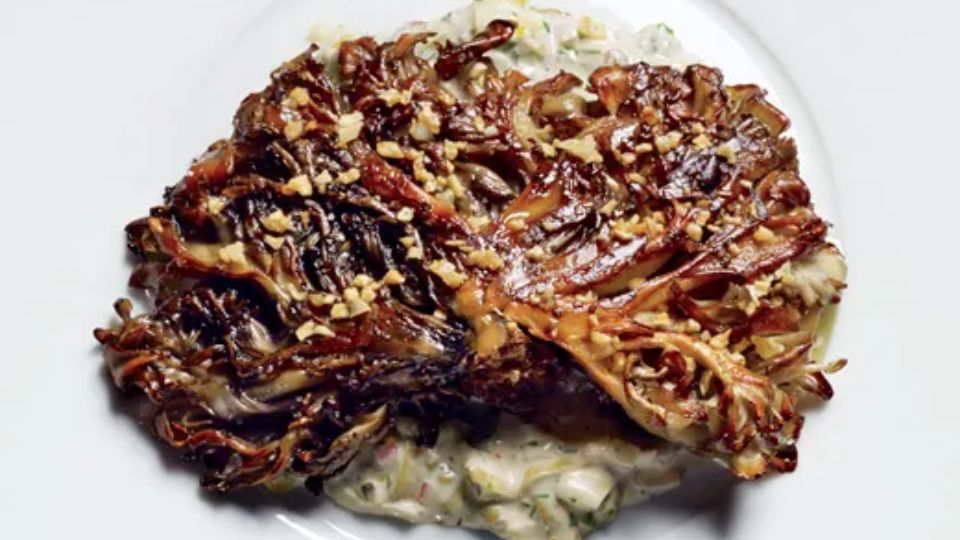
Ingredients
Instructions
- In a small saucepan, bring salted water to a boil. Add the sliced leek and cook until tender, approximately 4 minutes.
- Drain the leek and transfer it to a colander set in a bowl of ice water to cool. Once cooled, drain again and pat dry with paper towels.
- In a small bowl, combine the finely chopped shallot, cornichons, mayonnaise, Dijon mustard, capers, dill, tarragon, and 3 tablespoons of water. Adjust the consistency by adding more water if needed, and season with salt and pepper.
- Fold the cooled leek into the sauce mixture, ensuring it is well coated. (Season with additional salt and pepper if desired.)
- Heat a skillet over medium-high heat and add a drizzle of oil.
- Place the mushrooms in the skillet and sear for approximately 2-3 minutes on each side, or until they develop a golden-brown color and become crispy.
- Serve the seared Maitake mushrooms alongside the leek herb sauce.
6. Roast Maitake with walnuts (Vegan Option)
This was the most delicious thing I have ever tasted. It has a nutty flavor, with the earthiness of the roasted Maitake perfectly complementing the rich, toasty notes of the walnuts. The combination of these two ingredients creates a delightful symphony of taste and texture.
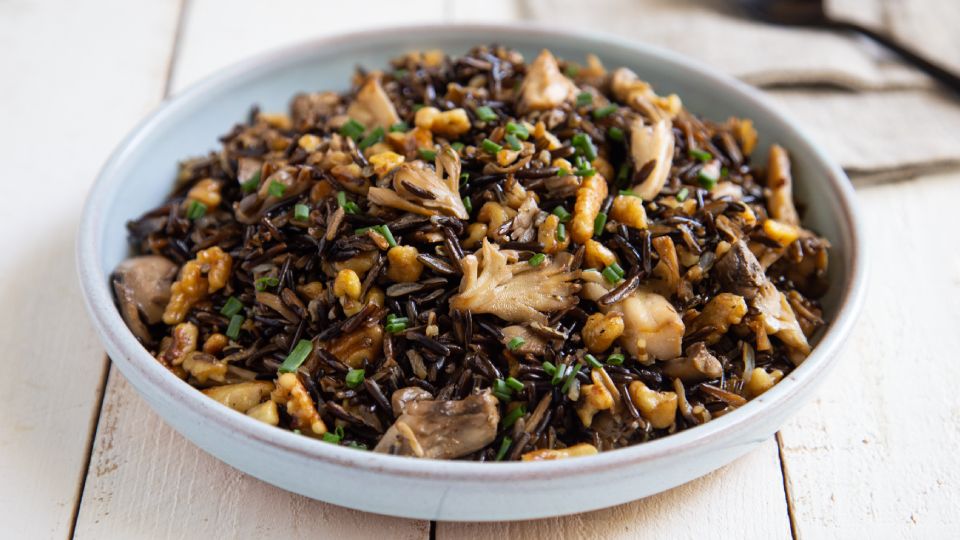
Ingredients
Instructions
- Preheat the oven to 375°F.
- In a bowl, toss the sliced Maitake, sliced onion, and chopped walnuts with avocado oil, sea salt, and black pepper.
- Spread the mixture out on a baking sheet and roast it for 20-25 minutes, or until the mushrooms become tender.
- Serve it with wild rice.
What Are Maitakes?
Maitake mushrooms, also known as “Hen of the Woods,” are edible mushrooms that are highly valued for their distinct flavor and potential health benefits. These types of mushrooms, belonging to the Grifola frondosa species, grow on the base of oak trees in forests across Asia and North America. With their frilly clusters resembling a hen’s feathers, Maitake has a robust, brown cap and pale-colored gills.
Not only are they a culinary delicacy, but they also offer immune-boosting properties due to the presence of beta-glucans. Revered in traditional medicine, these mushrooms have gained popularity for their unique taste and potential wellness advantages, making them a desirable addition to various dishes. You can find maitakes in the farmer’s market, or forage them in the wild.
Health Benefits of Maitake
Maitake is not only a treat for the taste buds, they are rich in nutrients and bioactive compounds and offers a plethora of health benefits. These remarkable fungi have been shown to possess medicinal properties that contribute to overall well-being.
Here is a list of top Benefits:
- Boosts immunity: Maitake mushrooms support your immune system, helping your body fight off illnesses[1].
- Regulates blood sugar: They may assist in balancing blood sugar levels, promoting better overall health[2].
- Supports heart health: Maitake mushrooms can contribute to a healthier heart by aiding in cholesterol management[3].
- Enhances weight management: They might assist in weight management by promoting a feeling of fullness and supporting a healthy metabolism.
- Provides antioxidant support: Maitake mushrooms contain antioxidants that help combat free radicals, promoting cell health[4].
Tips for Selecting and Storing Maitake
Maitake is a seasonal delicacy, typically available during the fall season when they grow and can be harvested. To make the most of your Maitake, it’s crucial to choose and store them wisely. You’ll need to ensure you select the best-quality mushrooms and maintain their freshness:
- When selecting, look for clusters with tightly packed fronds rather than loose clumps, as they indicate freshness and better flavor.
- Look for young, pliable, and damp Maitake when purchasing them. Avoid those that appear dry or have a slimy texture.
- Store Maitake in a paper bag or refrigerator drawer to maintain their freshness. Avoid sealing them in plastic, as it can trap moisture and lead to spoilage.
- Before cooking, give the mushrooms a quick rinse with cool water and pat them dry gently.
- If you’re unable to use maitake immediately, consider drying or freezing them to extend their shelf life.
Pairing Maitake with Other Ingredients
The earthy and peppery flavor of Maitake makes them a versatile ingredient that pairs well with various foods. Here are some delightful combinations to inspire your cooking creations:
- Pizza: Add sautéed Maitake to your favorite pizza dish for a tasty twist.
- Rice: Incorporate cooked Maitakes into a fragrant rice pilaf for an elevated side dish.
- Roasted Vegetables: Toss the mushrooms with your choice of roasted vegetables for a tasty medley of flavors.
With their unique taste and texture, Maitake can elevate the flavors of numerous dishes, satisfying even the most discerning mushroom lovers.
FAQs
What Does Maitake Mushroom Taste Like?
Maitake mushrooms have a rich, earthy flavor with a hint of umami. Their taste is often described as meaty, nutty, and savory. They add depth and complexity to dishes, making them a popular choice in various cuisines for their delicious and unique flavor profile.
What is Maitake Mushroom Used for?
Maitake mushrooms are used in cooking for their rich, earthy flavor. They can be sautéed, stir-fried, grilled, added to soups, stews, pasta dishes, or used as pizza toppings. Beyond culinary uses, they are also sought after for their potential health benefits and are used as a dietary supplement or functional food.
Where to Buy Maitake Mushrooms?
You can buy Maitake mushrooms at grocery stores, farmers’ markets, Asian markets, or specialty food stores. They may be available fresh or dried. Alternatively, you can also find them online through various retailers and have them delivered to your doorstep.
Who Should Not Take Maitake Mushroom?
Individuals with mushroom allergies should avoid Maitake mushrooms. Pregnant, breastfeeding or immunocompromised individuals should consult a healthcare provider before using them. If you have concerns or specific health conditions, it’s advisable to seek professional guidance regarding Maitake mushroom consumption.
Conclusion
Incorporating Maitake mushrooms into your cooking repertoire is a fantastic way to explore new flavors and enjoy the numerous health benefits they offer. From quick stir-fries to pickled salads, there’s a Maitake recipe to suit every taste. Remember to choose fresh mushrooms, experiment with various pairings, and savor the earthy goodness that these mushrooms bring to your culinary adventures.
References
1. Effect of Dietary Maitake (Grifola frondosa) Mushrooms on Plasma Cholesterol and Hepatic Gene Expression in Cholesterol-Fed Mice. Retrieved from https://www.jstage.jst.go.jp/article/jos/62/12/62_1049/_article/-char/en
2. Immunostimulatory and antioxidant activities of the selenized polysaccharide from edible Grifola frondosa. Refrieved from https://www.researchgate.net/publication/358277933_Immunostimulatory_and_antioxidant_activities_of_the_selenized_polysaccharide_from_edible_Grifola_frondosa?_sg=fPdUMhjJmi5pi2Cg9-PV70jk7ZsYe62tAg3zJMqgDGqhIXB7b0WwvneQUwhkuz2qMmHue-cRbGb8PYU
3. The biological activities of the antitumor drug Grifola frondosa polysaccharide. Retrieved from https://www.researchgate.net/publication/332027521_The_biological_activities_of_the_antitumor_drug_Grifola_frondosa_polysaccharide
4. Grifola frondosa inhibits TNF-α-induced intestinal inflammation via suppression of MCP-1 and IL-8 expressions in HT-29 human colon epithelial cells. Retrieved from https://faseb.onlinelibrary.wiley.com/doi/10.1096/fasebj.22.1_supplement.1109.1

